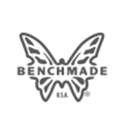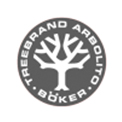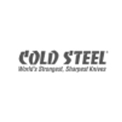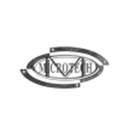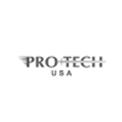A Brief Categorization of Our Knives for Sale
7th Sep 2020

Even with a term that seems as well defined as “pocket knife” there is a world of differences between models and styles. Herein we’re going to take a very brief look at some of the different types of knives for sale that you will find on our website.
Keep in mind that your needs as a person, as well as what you intend to use the knife for, will be the biggest indicators of what type of knife you should get, and not the brand. Therefore, although we carry many excellent brands such as (but far from limited to) Buck, Gerber, Cold Steel, Benchmade, Spyderco, Kershaw, ZT, and many, many others, look through this first in order to refine your search.
It is also important to note that this guide is extremely cursory. Given the length of this article, there are many different styles of knife as well as brands that we will not be able to dive into. Let this, then, serve only as a rough guide that you can use while you are shopping, and be sure you check our blog in the future for more informative posts about knife skills and uses, types of knives, and more.
Folders
When most people think of the words “pocket knife” they are looking for a folding knife, whether it be a locking folder or a slip joint, but we will get into that more below.
You can find just as much diversity in folding knives as you can in fixed blades, and there are just as many good uses for carrying a folding knife as there are for carrying a fixed blade. First, they are enormously useful, require no sheath, and can generally be conveniently stashed in a pocket until they are needed. In addition, many of them come with pocket clips that make it easy to carry them in or out of a pocket, or on your waistband, both tip up or tip down.
In addition, because they are generally smaller than many fixed blades, folding pocket knives can be useful for carrying in areas where there are restrictions on some blades. Naturally, you will need to be personally familiar with the knife laws and regulations in your jurisdiction, but this is just one more reason that some people prefer folders.
What to Look for
There are too many things to look for in a pocket knife than we can easily cover within the scope of this article so we will limit it to a few different things. If you are looking for a slipjoint, look for one that opens and closely securely and crisply, without any play at the shoulder of the blade. Make sure the scales are flush and the fit and finish are good.
If you want a locking folder, make sure you go with a blade that has a sturdy, secure locking mechanism that is unlikely to disengage under work. That makes some locks like lockbacks preferable to linerlocks because, generally, lockbacks are sturdier and better able to stand up to work. At the same time, you might want to look for a knife with a pocket clip, or even a reversible pocket clip so you can easily carry it how you like.
Finally, get a folder with a blade profile and steel that support your uses. Drop points and tanto points are very sturdy, whereas clip points are more useful for fine detail work. Pen knives are thinner and less sturdy, but also good for fine detailing. Otherwise, take a look through some of these different styles of knives for sale that you can find here at White Mountain Knives.
Slip Joint Folders
Some people prefer to carry slipjoint folders instead of locking folders. A slipjoint is a type of mechanism that keeps the blade open (or closed) via the pressure of a spring. While they will remain open unaided, they also will not lock. There are a few reasons why someone might prefer to carry a slipjoint over a locking blade. One is that they are typically smaller, lighter and overall more convenient. Another is that some places proscribe the carrying of locking blades and so slip joints are an option.
They can be very convenient but it is important to remember that the work for which you reserve a slipjoint should be light. You can perform some food preparation with these and even open packages, but you can’t perform heavy tasks because these blades rarely have the structural gusto. Some of the most popular slip joints in our collection are Victorinox Swiss Army Knives and Case Knives. Check them out at the links above.
Locking Folders
On the other hand of slip joints there are locking folders, which are very widely carried because they enable the person carrying them to perform tougher tasks. Some locking folders actually come fairly close to the capabilities of some larger folding blades.
They also usually possess a number of features that make them easier to carry, like pocket clips, and easier to open, like thumb studs, but that is not always the case. Check out some of the popular lock types below for more information before you decide which one will work best for you.
Lockbacks
One of the older types of locking mechanisms in folding pocket knives is the lockback mechanism. In the event that you are unfamiliar with the term, you might recognize it by sight or by description. Check out the Buck 110 in the image below.
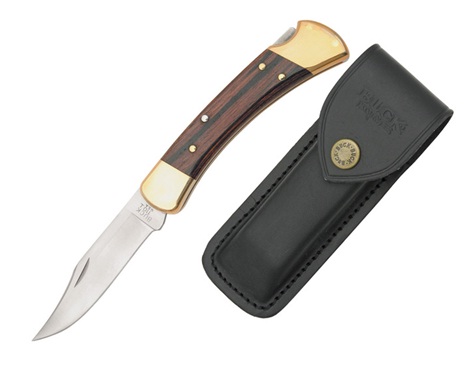
This is a fine example of the lockback mechanism, and in fact, the Buck 110 was the first modern knife to be produced using a lockback. The lockback allows the blade to pivot near the bolster and locks in place when open under the pressure that a spring exerts on a metal rocker. The same spring exert pressure on the rocker the blade is closed in order to keep it closed.
The lockback can be recognized by the small sliver of metal along the back of the handle in between the scales that must be depressed in order to unlock and close the blade. When engineered properly (as in the Buck 110) this is a very sturdy locking mechanism.
Liner locks and Framelocks
Liner locks, and slightly less commonly, framelocks, are some of the most prevalent locking mechanisms that can be found in folding knives today. Liner locks and framelocks both operate according to the same principles. The inside of the frame of the knife, under the scales, contains a strip of metal that is under pressure and, when the blade is opened, springs inward into the space left by the knife. The strip of metal is machined to engage a portion of the back of the knife in order to hold it in place. To unlock the knife, you simply press the metal lock back into place away from the bottom portion of the knife to disengage it.
Liner locks are convenient because they can easily be engaged and disengaged with one hand, which makes them very popular. They are also easier to engineer and manufacture, which makes them more affordable to produce. However, they rarely provide a lockup as sure or secure as what can be found in a lockback, so that is something to keep in mind.
Other Lock Types
While lockbacks and liner locks account for the majority of locking folders out there, there are some other lock mechanisms, some proprietary, that have become very popular in certain circles.
One of these is the Axis lock of many Benchmade knives, which is safe, secure and sturdy, and like the liner lock can be easily engaged or disengaged with one hand.
Some folding knives even use other types of locks such as ball bearing locks, button locks, and the collar locks used by many Opinel knives. There are others, but for the purposes of this article, the majority of locks you will come across are liner locks, framelocks and lockbacks, with a few axis locks thrown in the mix.
Fixed Blades
While folding knives can be very convenient and carried easily, especially for EDC purposes, there are plenty of people out there who can’t get away from a reliable fixed blade. There are even some that will tell you that folding knives are “pre-broken” and that it’s not even worth your time to carry one.
We won’t take such a hard line stance, but they do have a point. There are certain jobs that simply are the purview of fixed blades because folders can stand up to them, but we’ll get into that a little further below.
What to Look for
Things to look for in a fixed blade will vary, just as they will in folders, but there are a few things you can look for across the board. For one thing, you should look for a full tang, regardless of what you will use the knife for.
Check out the Benchmade Bushcraft Knife in the picture below and you can see an excellent example of a full tang.
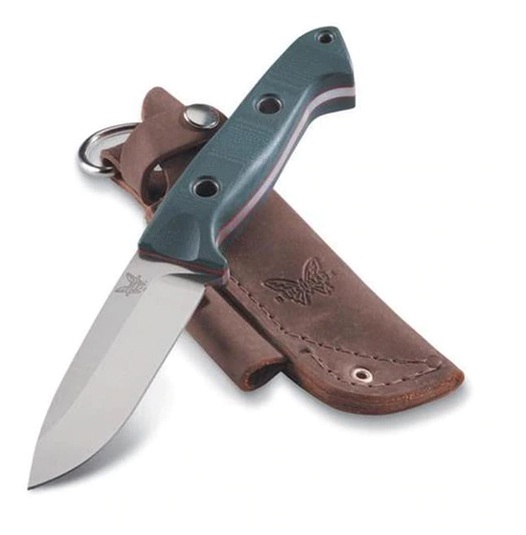
Do you see how you can see the tang between the scales and how it extends all the way to the pommel of the knife? Notice that the tang is also the full width throughout, which is something else to look out for. Partial tangs sometimes create stress risers and this is something you should avoid in a fixed blade.
There is nothing stronger than a full tang, period. The best locking mechanisms cannot stand up to them, and at the same time, a full tang will give you the ability to craft new scales for your knife in a pinch.
Hunting Knives
There are tons of different hunting knives out there and some of them are specialized for specific purposes. There are skinners with wide swept bellies, boners and filet knives that are specially designed for reaching into small spaces and separating meat from bone. Then there are capers, gut hooks and generic blades with drop points, clip points and more.
The best advice we can offer you when you are shopping for a hunting knife is to be sure of what you are hunting and what you expect the knife to do. Pick a good steel for the task that can offer you good edge retention and you will be set to go.
Bushcraft Knives
Bushcraft knives, unlike hunting knives, are rarely specialized in the same manner. Whereas some hunting knives are extremely specialized, some bushcraft knives are intended to be jacks of all trades. For that reason, many bushcraft knives have spear points, flat grinds and straight edges. This enables them to perform some of the same tasks as other hunting knives (albeit with slightly less facility) while still enabling them to split and carve wood, drill holes and even dig holes in a pinch. There is no universally accepted rule for what makes a bushcraft knife, but generally bushcraft knives are between 4 and 6 inches in length and possess some of the features already mentioned - for reference, the Benchmade knife pictured above is considered a bushcraft knife.
Camp Knives
Think of camp knives as similar to bushcraft knives but bigger. Most camp knives are designed to do the heavy work around campsites, being splitting logs, constructing furniture, carving tools and making fire.
Many camp knives are styled after Kukris, bolos, machetes, parangs and other larger blades, sometimes even with a weight forward design for chopping. As with bushcraft knives, there is no hard or fast rule that defines a camp knife; just know that most of them are on the larger side and equipped to handle tough chores.
Among our many knives for sale, we offer a multitude from each of these categories and many others, including survival knives and other tools like axes. In short, if you are looking for a knife or tool, there is a good chance we offer it, and if not, get in touch with us to see if we can find it for you. Our customer service team would be happy to get to the bottom of it for you.
Take a look through our catalog, reach out to us at Whitemountainknives@gmail.com if you have questions, and be sure to check back soon for more articles on the different types of knives we offer, their uses, and skills you can learn with them!

